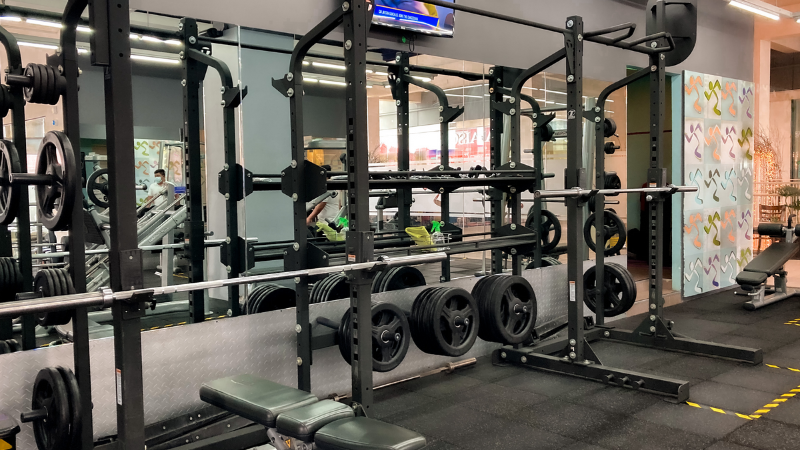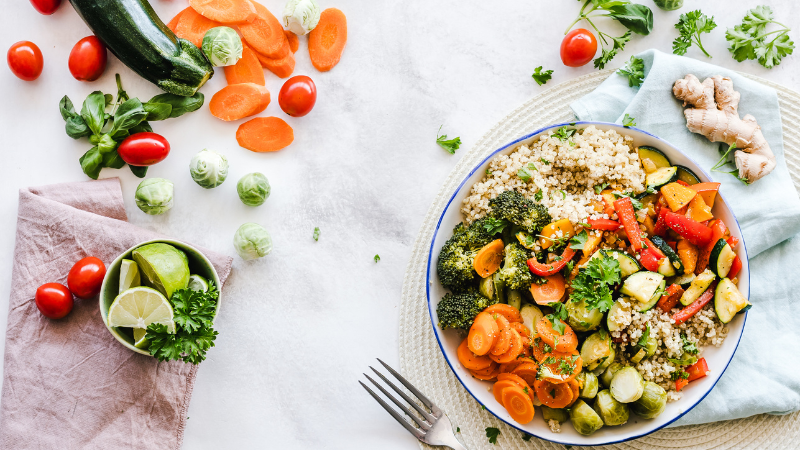Best Women’s Fitness Routines for Weight Loss: Your Ultimate Guide
Best Women’s Fitness Routines For Weight Loss: Cardio, Strength, HIIT, Yoga, Pilates & Nutrition. Set goals, stay motivated, achieve results!

Introduction
When it comes to shedding those extra pounds and achieving a healthier, more confident you, the right fitness routine can make all the difference. In this comprehensive guide, we will explore the best women’s fitness routines for weight loss. From cardiovascular exercises to strength training, high-intensity interval training (HIIT), yoga, and Pilates, we’ve got you covered. Plus, we’ll discuss essential nutrition tips, goal setting, and strategies for staying motivated. Let’s embark on this empowering journey towards a healthier you!
The Basics of Weight Loss and Fitness
Before diving into specific fitness routines, let’s start with the fundamentals.
Weight loss is a complex process influenced by various factors, with diet and exercise playing crucial roles. When you engage in regular physical activity, you burn calories, which, when combined with a balanced diet, can lead to weight loss. However, it’s important to understand that weight loss is not just about shedding pounds; it’s about achieving a healthier lifestyle.
Setting Realistic Weight Loss Goals
To get started on the right foot, setting realistic weight loss goals is essential. Here’s how:
- Specific Goals: Clearly define what you want to achieve, whether it’s losing a certain number of pounds or fitting into a particular clothing size.
- Measurable Progress: Ensure your goals are quantifiable. For instance, aim to lose 1-2 pounds per week.
- Achievable Objectives: Make sure your goals are attainable within your current circumstances and lifestyle.
- Relevance: Your goals should align with your overall health and well-being.
- Time-Bound: Set a timeframe for achieving your goals, which provides motivation and focus.
Now that we’ve set the stage, let’s delve into the various fitness routines that can help you on your weight loss journey.
Cardiovascular Exercises for Weight Loss
Cardiovascular exercises, often referred to as cardio, are excellent for burning calories and improving cardiovascular health. Here are some of the best options:
- Running: Whether on a treadmill or outdoors, running is a highly effective calorie-burning exercise. Start with a brisk walk and gradually increase your pace.
- Cycling: Riding a bike is a low-impact exercise that is gentle on the joints. It’s an excellent choice for those looking to shed pounds while protecting their knees and hips.
- Swimming: Swimming engages multiple muscle groups and provides a full-body workout. Plus, it’s gentle on the joints.
- Jump Rope: A simple jump rope can provide an intense cardio workout in a short amount of time. It’s great for boosting metabolism.
- Dancing: Dancing is not only fun but also a fantastic way to burn calories. Consider joining a dance class or just dancing around your living room.
Incorporating Cardio into Your Routine
To make the most of your cardio workouts:
- Aim for at least 150 minutes of moderate-intensity cardio or 75 minutes of vigorous-intensity cardio per week, as recommended by the World Health Organization.
- Combine different cardio exercises to keep your routine interesting and prevent boredom.
- Monitor your heart rate to ensure you’re working within your target zone for optimal calorie burn.
Now, let’s shift our focus to another essential component of your weight loss journey: strength training.
Strength Training for Weight Loss

Strength training, also known as resistance training, involves lifting weights or using your body weight to build muscle. Contrary to the misconception that lifting weights makes you bulky, it actually helps you burn more calories even at rest.
Benefits of Strength Training
- Increased Metabolism: Muscle burns more calories at rest than fat, which means you’ll continue to burn calories even when you’re not working out.
- Improved Body Composition: Strength training helps sculpt and define your body as you lose weight.
- Enhanced Bone Health: Weight-bearing exercises promote bone density and reduce the risk of osteoporosis.
- Injury Prevention: Strong muscles and joints can help prevent injuries, especially as you increase your physical activity.
Effective Strength Training Exercises
- Weightlifting: This can be done with dumbbells, barbells, or machines. Start with lighter weights and gradually increase the resistance as you get stronger.
- Bodyweight Exercises: These include push-ups, squats, lunges, and planks. They require no equipment and can be done anywhere.
- Resistance Bands: These portable bands provide resistance during exercises and are perfect for home workouts.
- Yoga and Pilates: These practices not only improve flexibility but also incorporate strength-building exercises.
Creating a Strength Training Plan
- Frequency: Aim for at least two to three days of strength training per week, targeting different muscle groups each time.
- Sets and Repetitions: Beginners can start with 2-3 sets of 8-12 repetitions per exercise.
- Progressive Overload: Gradually increase the weight or resistance to challenge your muscles and keep them growing.
- Rest Days: Allow muscles to recover with 48 hours of rest between strength training sessions for the same muscle group.
With a combination of cardio and strength training, you’ll be well on your way to achieving your weight loss goals. But there’s one more powerful tool you can add to your arsenal: High-Intensity Interval Training (HIIT).
High-Intensity Interval Training (HIIT)
HIIT is a time-efficient and highly effective workout method that involves short bursts of intense activity followed by brief periods of rest or low-intensity activity. It’s known for its ability to torch calories and increase metabolism.
Why Choose HIIT for Weight Loss
- Efficiency: HIIT workouts are typically shorter but burn more calories than traditional steady-state cardio.
- Metabolic Boost: HIIT continues to burn calories even after the workout due to excess post-exercise oxygen consumption (EPOC).
- Versatility: HIIT can be customized to your fitness level and preferences, making it suitable for beginners and advanced exercisers.
Sample HIIT Workouts
Here are a few HIIT routines you can try:
- Tabata: 20 seconds of high-intensity exercise followed by 10 seconds of rest, repeated for four minutes.
- Pyramid: Increase the duration of high-intensity intervals incrementally, then work back down.
- Circuit Training: Combine various exercises with minimal rest in between.
Safety tip: If you’re new to HIIT, consult a fitness professional to ensure you’re using proper form and avoiding injury.
Yoga and Pilates for Weight Loss
While cardio, strength training, and HIIT are fantastic for burning calories, yoga and Pilates offer unique benefits that complement your weight loss journey.
Yoga
Yoga combines physical postures, breathing exercises, and mindfulness to promote overall health and well-being. Here’s how it contributes to weight loss:
- Stress Reduction: Yoga reduces stress, which can lead to emotional eating and weight gain.
- Flexibility: Improved flexibility enhances your range of motion and performance in other workouts.
- Mindful Eating: Yoga encourages mindful eating, helping you make better food choices.
Beginner-Friendly Yoga Routine
- Sun Salutations: A series of poses that warm up the body and increase circulation.
- Warrior Poses: Strengthen and tone leg muscles
- Downward-Facing Dog: Stretches the back, hamstrings, and calves.
- Plank Pose: Engages the core muscles and builds strength.
- Child’s Pose: A resting pose that helps relax and calm the mind.
Pilates
Pilates is a low-impact exercise method that focuses on core strength, flexibility, and balance. Its benefits for weight loss include:
- Core Strengthening: A strong core contributes to better posture and overall stability.
- Improved Muscle Tone: Pilates engages multiple muscle groups, helping to tone your body.
- Mind-Body Connection: Like yoga, Pilates encourages mindfulness and body awareness.
Beginner-Friendly Pilates Routine
- The Hundred: A classic Pilates exercise that targets the core.
- Leg Circles: Strengthens the hip flexors and works the lower abdominals.
- Bridge: Tones the glutes, hamstrings, and lower back muscles.
- Spine Stretch Forward: Improves flexibility in the spine and hamstrings.
- Plank Variation: Engages the core and promotes overall stability.
Both yoga and Pilates can be practiced at home or in a studio, making them convenient options for individuals looking to improve their fitness and lose weight.
Nutrition Tips for Weight Loss
Exercise alone is not enough for effective weight loss. Proper nutrition plays a crucial role in achieving and maintaining a healthy weight.

Balanced Diet Basics
- Portion Control: Pay attention to portion sizes to avoid overeating. Using smaller plates can help.
- Mindful Eating: Eat slowly and savor your food. Avoid distractions like TV or smartphones during meals.
- Whole Foods: Choose whole, unprocessed foods like fruits, vegetables, lean proteins, and whole grains.
- Hydration: Drink plenty of water throughout the day to stay hydrated and support metabolism.
Foods to Include in Your Diet
- Lean Proteins: Chicken, turkey, fish, tofu, and legumes provide satiety and support muscle growth.
- Fruits and Vegetables: Loaded with vitamins, minerals, and fiber, they keep you full and satisfied.
- Whole Grains: Opt for brown rice, quinoa, oats, and whole wheat bread over refined grains.
- Healthy Fats: Avocado, nuts, seeds, and olive oil provide essential nutrients.
- Limit Sugar and Processed Foods: Minimize consumption of sugary snacks, sodas, and processed foods high in trans fats.
- Meal Planning: Prepare healthy meals in advance to avoid making poor food choices when hungry.
Remember that sustainable weight loss is not about extreme diets but about making long-term lifestyle changes.
Creating Your Personalized Fitness Routine
Now that you have a wealth of information about different fitness routines and nutrition, it’s time to create a plan tailored to your needs and preferences.
- Assess Your Goals: Determine your specific weight loss goals and desired outcomes.
- Choose Your Activities: Select a combination of cardiovascular exercises, strength training, and other activities you enjoy.
- Set a Schedule: Create a weekly exercise schedule that fits into your daily life.
- Mix It Up: Keep your routine fresh by alternating between different types of workouts to prevent boredom.
- Stay Consistent: Consistency is key to seeing results. Stick to your plan and make adjustments as needed.
- Listen to Your Body: Pay attention to how your body responds to different workouts and adjust as necessary.
- Track Your Progress: Use a fitness journal or app to monitor your workouts, nutrition, and overall progress.
Staying Motivated and Overcoming Plateaus
Maintaining motivation throughout your weight loss journey can be challenging, but it’s crucial for success. Here are some strategies to help you stay on track:
- Find a Workout Buddy: Exercising with a friend can make workouts more enjoyable and hold you accountable.
- Reward Yourself: Set up a reward system for reaching milestones, such as treating yourself to a massage or a new workout outfit.
- Join a Class or Group: Participating in group fitness classes or challenges can provide a sense of community and motivation.
- Track Your Achievements: Celebrate your accomplishments, no matter how small. Recognize your hard work and progress.
- Reevaluate Your Goals: If you hit a plateau, it may be time to reassess your goals and adjust your plan accordingly.
- Practice Self-Compassion: Be kind to yourself and understand that setbacks are part of the journey. Keep moving forward.
Best Women’s Fitness Routines For Weight Loss Conclusion
In conclusion, the journey towards achieving your weight loss goals as a woman is both empowering and achievable. By incorporating a balanced mix of cardio, strength training, HIIT, yoga, and Pilates into your fitness routine, and complementing it with mindful nutrition, you’re well-equipped to embark on this transformative path.
Remember to set realistic goals, stay committed, and maintain the motivation that comes from knowing you’re making positive changes for your overall health and well-being. As you progress on this journey, celebrate your victories, no matter how small, and embrace the confidence and vitality that accompanies a healthier you. Your commitment to these best women’s fitness routines for weight loss is an investment in your future self, one that promises a brighter, more vibrant, and more fulfilled life.
Frequently Asked Questions (FAQ’s)
Q1: Can I rely solely on cardio for weight loss?
A1: While cardio is effective for burning calories, combining it with strength training, HIIT, and a balanced diet is ideal. Strength training helps build lean muscle, which boosts metabolism, aiding in long-term weight loss.
Q2: Is it necessary to hire a personal trainer for these routines?
A2: A personal trainer can provide valuable guidance, but many resources, such as online tutorials and fitness apps, offer structured workouts and form instructions. A trainer can be beneficial, but it’s not essential.
Q3: How long does it take to see weight loss results with these routines?
A3: Individual results vary, but you can typically expect to see noticeable changes within 4-12 weeks of consistent effort. Patience and consistency are key to achieving long-term weight loss goals.
Q4: Can I do these fitness routines at home, or do I need a gym membership?
A4: All the mentioned fitness routines, including cardio, strength training, HIIT, yoga, and Pilates, can be adapted for home workouts. Gym access can provide additional equipment and variety but is not a necessity for success.




